Difference Between Normal and Cancer Cells
Living organisms are made of cells. In order to sustain life in a healthy manner, these cells must behave in biologically necessary ways. At any given moment, cells in the body are being born, growing, dividing, and being destroyed all to maintain a healthy balance called homeostasis. This article is designed to help the reader understand the difference between normal and cancer cells.
Sometimes when the normal cell regulation process is disrupted, a chain reaction of cellular malfunction can occur which leads to disease. One such disease that results from a malfunction in cellular regulation is cancer. It helps to understand the differences between healthy cells and cancer cells when employing a strategy to rid the body of cancer.
How Cancer Cells Develop
Cancer cells are always present in the human body, however they are typically recognized by the immune system and destroyed before they cause any problems. It is when cancer cells go unrecognized and begin to multiply that they become a burden. Cancer cells differ from healthy cells in critical ways that make them harmful to the body.
Cancer cells are unlike any other cell in the body and they act totally out of line with normal cell functions. As they develop, they begin to ignore the signals sent by the body telling them when and when not to grow or even when to die. When they are allowed to accumulate, they begin to stray even further from normal acquiring unique traits affecting the ways they communicate, specialize, and locate themselves in tissues.
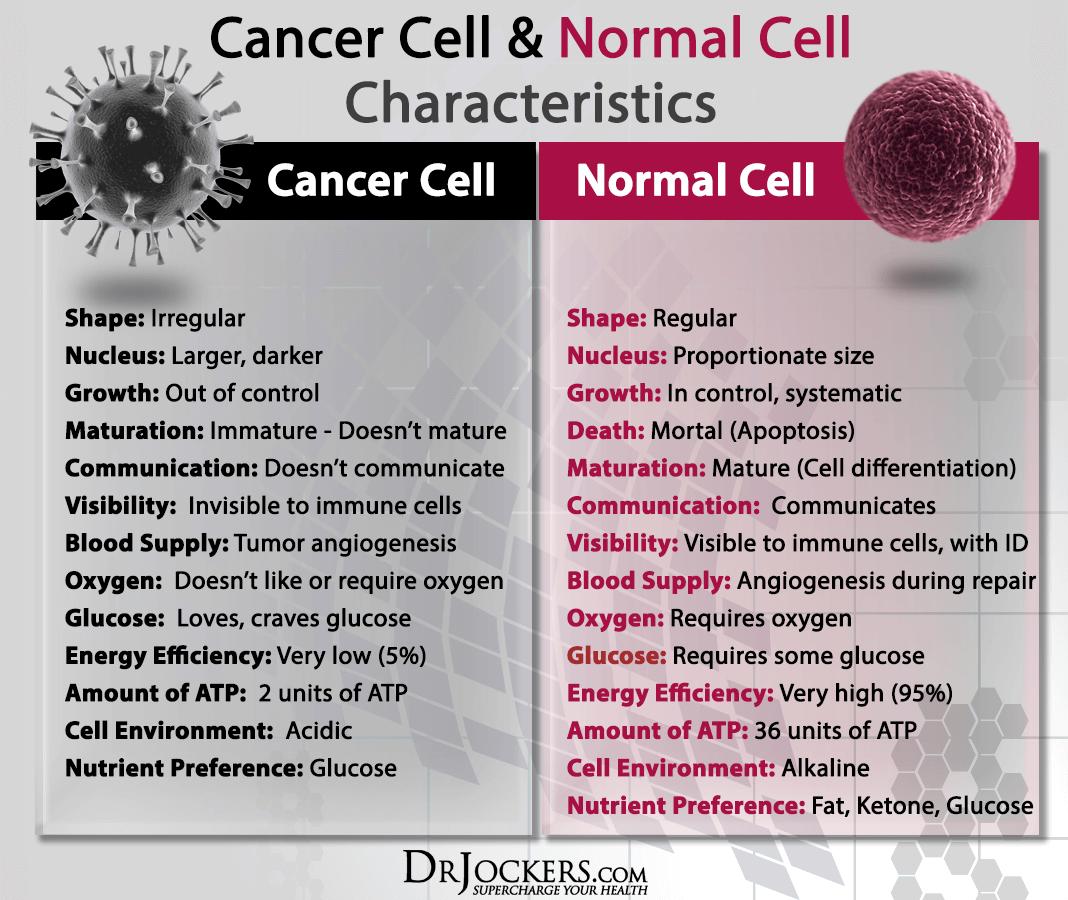
Reproduction & Cell Death
The first and most significant difference has to do with how they multiply or reproduce. Cells divide for several reasons including the need to form new tissue or to replace old and damaged cells. In a colony of healthy cells this is a tightly regulated process that is mediated through a complex set of chemical processes that signal the cells when to divide and when to stop dividing.
The difference with cancer cells is that they no longer listen to the signals given to them and they divide uncontrollably without stopping. Cancer cells develop what is referred to as metabolic autonomy which means they are able to self-mediate growth and division instead of being stimulated by an external signal like a normal cell (1).
Another peculiar characteristic of cancer cells is that they are immortal. Whereas normal cells will be destroyed when they are old or damaged, cancer cells continue to grow and divide indefinitely even though they are damaged. It is this characteristic of uncontrolled cell division that embodies what is considered to be cancer and can lead to the development of tumors.
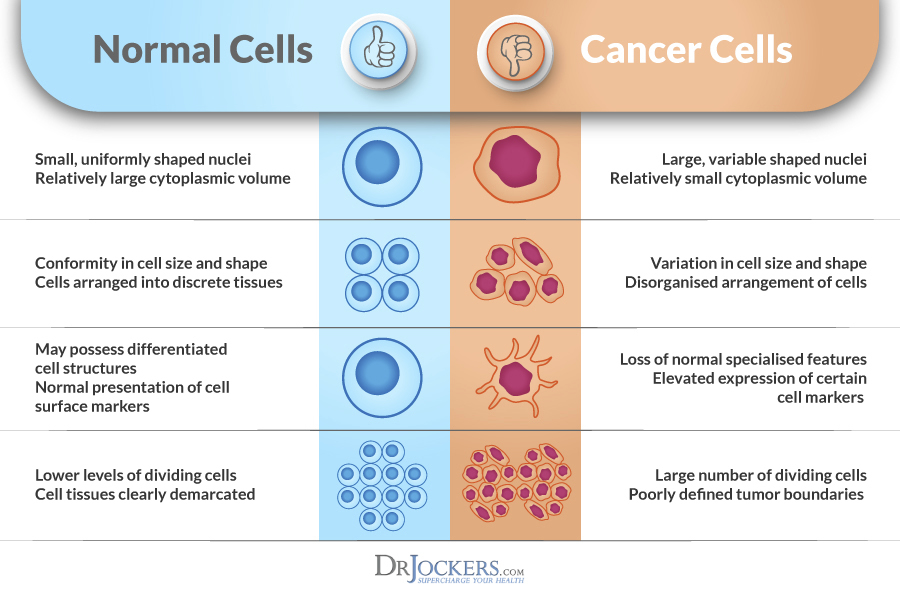
Communication
Cells communicate with each other through chemical signals. It is these signals that alert cells when to grow, divide, stop dividing, etc. These signals are also important for preventing groups of cells from encroaching upon the space of other groups of cells.
Cellular communication is an important aspect in cancer prevention because a group of cells growing rapidly can be recognized and halted before given the chance to grow out of control. It is well known that in a cancerous cell, one of the first mutations to occur is in its ability to communicate with its surroundings. In absence of this characteristic cells are able to grow rapidly and invade surrounding tissues even though they may be receiving, but not processing appropriately, external signals to halt growth.
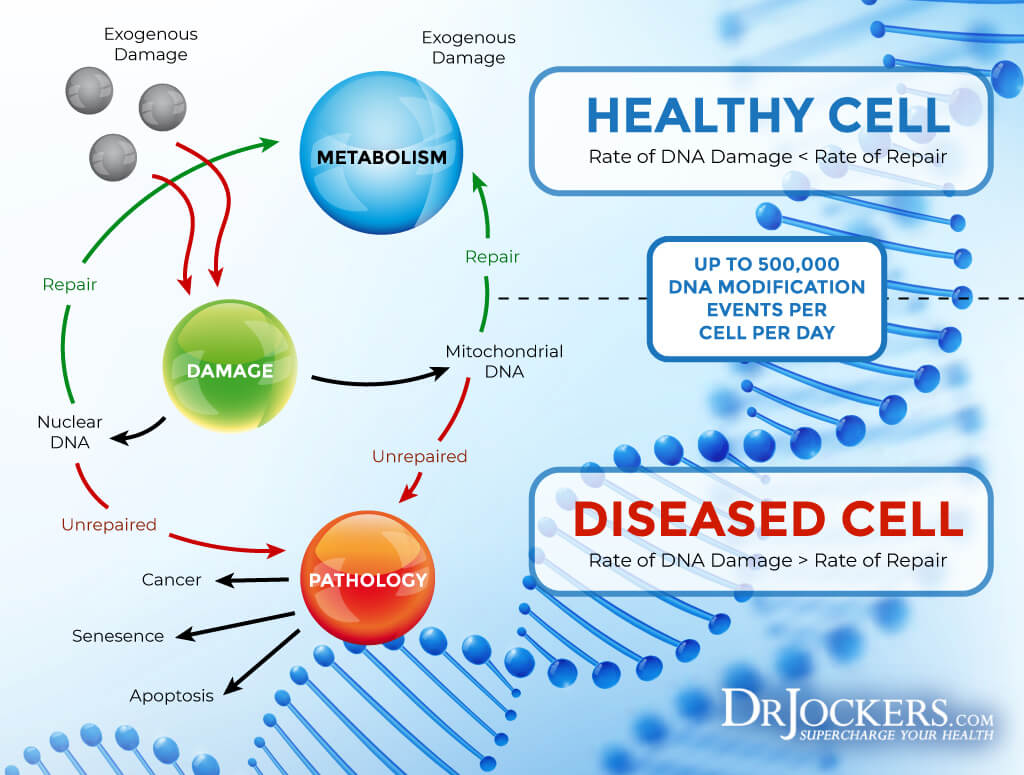
Specialization (Development) & Adhesion
Before a human cell becomes a liver or a skin cell, it begins as what is known as a stem cell. A stem cell can also be referred to as a baby cell in a way because as it grows it becomes specialized for certain functions and is sent to the location in which it is most viably suited. For example, a cell that is specialized to function as part of the liver will be sent to the liver where it will adhere to similar tissue and assume its function. This is a fundamental process which allows the body to heal and develop specific tissues based on cell type.
Cancer stem cells demonstrate a different developmental process in which they never really become specialized and lack the adherence qualities that make normal cells stick with their own kind. Instead, cancer stem cells remain in the underdeveloped state where they continue to divide and spread. In some forms of cancer, such as melanoma, specialized cells can even go through what is called dedifferentiation and be converted back from specialized cells to cancer stem cells (2).
Treatments which target these stem cells are crucial for curing cancer. Traditional treatments typically target tumors but leave the stem cells behind, making them more aggressive and allowing them to rebuild the tumor rapidly. Cancers which contain high amounts of these evasive cancer stem cells, such as pancreatic cancers, which have proven to be highly aggressive and chemo-resistant (3).
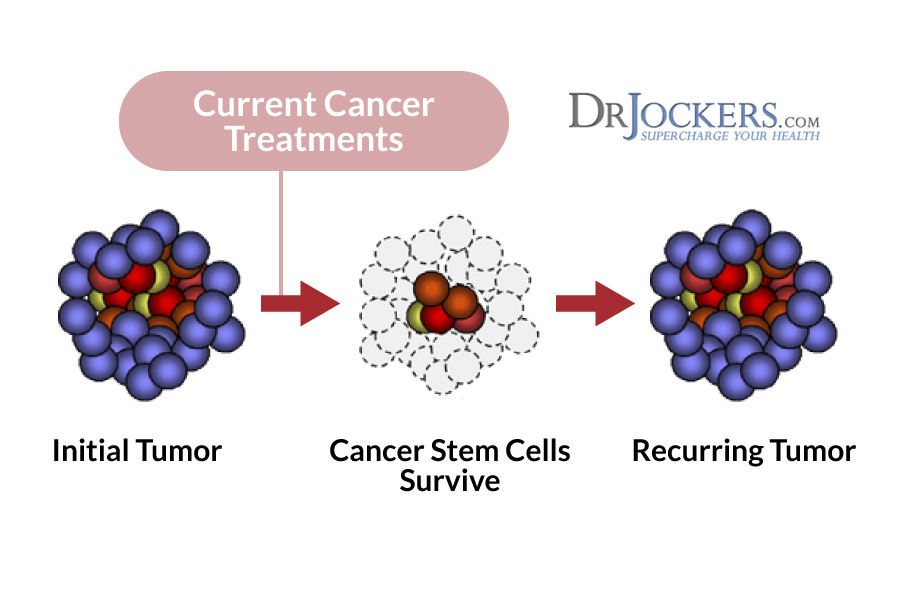
Activating Cancer Genes
It is well known that cancer is preceded by damaged DNA. Because DNA is encoded with the instructions for cell behavior, damaged DNA can alter cell processes including those that regulate growth and division. This is supported by the fact that tissues which have a high cell-division rate, such as bone and lymph, are the most common sites for cancer (4).
Some genes, encoded on DNA, act as a switch that can be turned on or off depending on cell needs. Free radicals have the ability to break DNA strands which can result in some genes being permanently switched on, such is the case with cancerous cell growth. Although it is often taught that the DNA mutations that lead to cancer happen at random, research suggests there are epigenetic triggers that may increase prevalence of DNA damage.
Excessive Free Radicals:
One such epigenetic trigger being heavily studied in the field of oncology is the free radical. A free radical is a molecule produced in the body that lacks an electron which scavenges the body, taking electrons from structures which wouldn’t otherwise give them away and causing oxidative stress.
Free radicals can build up in the body due to radiation, chemicals, chronic malnutrition, excessive intake of calories, or even extreme exercise and some studies have shown an increased prevalence of cancer associated with high amounts of oxidative stress (5). This could explain the high association of cancer with cigarette smokers as the result of systemic ingestion is increased free radical production in the body.
Prevention Steps
DNA is vital for cell function and the body has mechanisms by which it protects DNA from being damaged. One of the most important mechanisms is the one responsible for the production of antioxidants.
A major step in the prevention of DNA damage, and therefore cancer, would be to optimize antioxidant activity. Research has suggested that this can be achieved through the adoption of a diet that incorporates antioxidant rich foods or extracts (6).
Glutathione plays a major role in the antioxidant activities of the body. Evidence shows that this molecule alone has the ability to influence cancer risk in a directly correlative manner.
This means that by increasing your body’s supply of glutathione, you are drastically improving its ability to control free radicals before they damage cells. There are several ways in which you can increase your supply of glutathione.
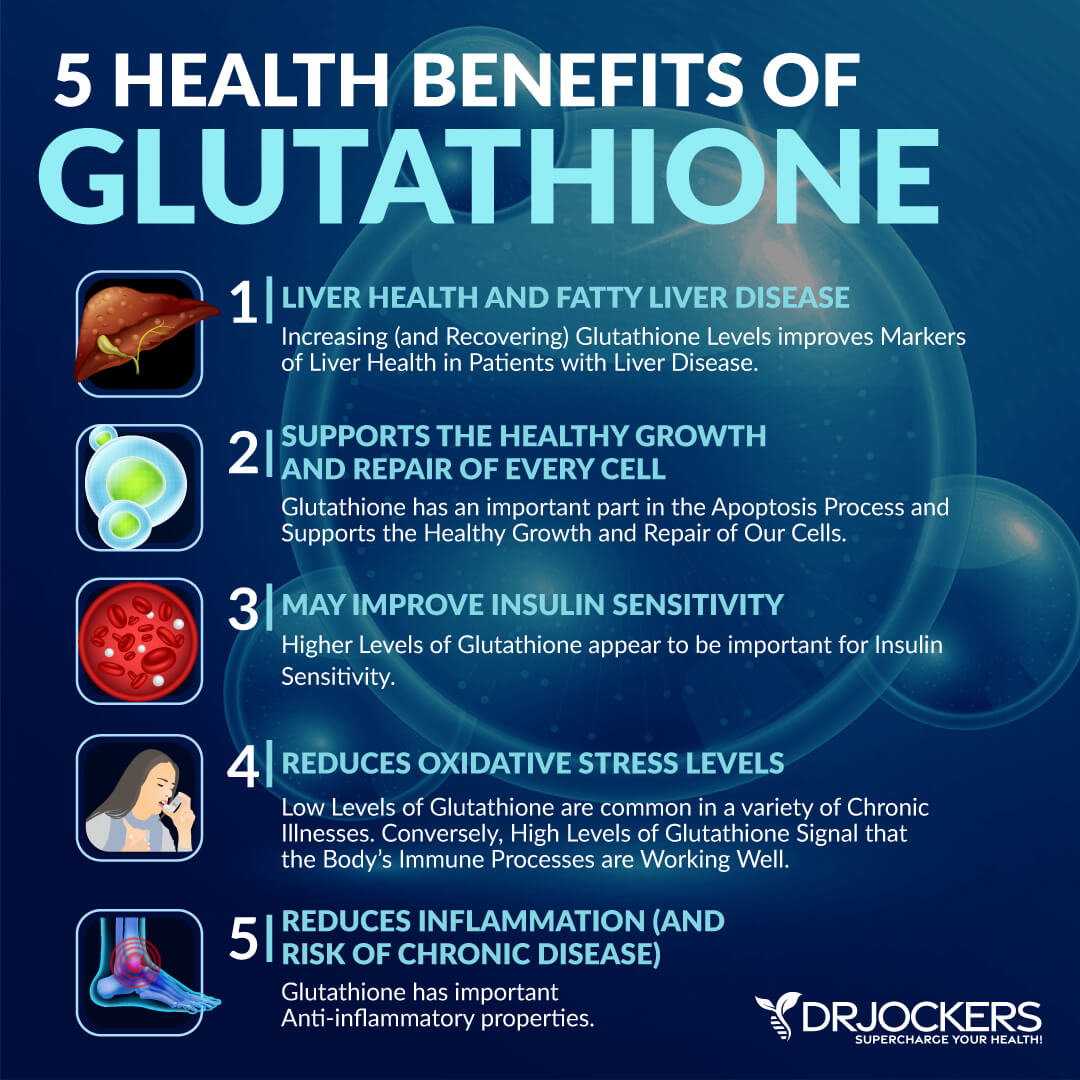
Boosting Glutathione Levels:
L-cysteine is an amino acid that contains a sulfur group which is critical for glutathione production. Many foods contain cysteine but either not in a form that can survive the digestive tract or not in high enough concentrations to influence cellular glutathione levels.
A more effective alternative to raise glutathione levels would be to ingest supplemental cysteine in the form of N-acetyl-L-Cysteine or NAC. It is important to use the NAC form because it is able to survive the digestive tract and absorb into the cells safely and effectively.
Other sources to include for optimized glutathione levels are alpha lipoic acid (ALA) and flavonoids from fruits and vegetables. Finally, magnesium levels have shown to have an indirect impact on glutathione levels. Magnesium deficiency can drastically increase free radical production and as a result glutathione stores deplete more rapidly.
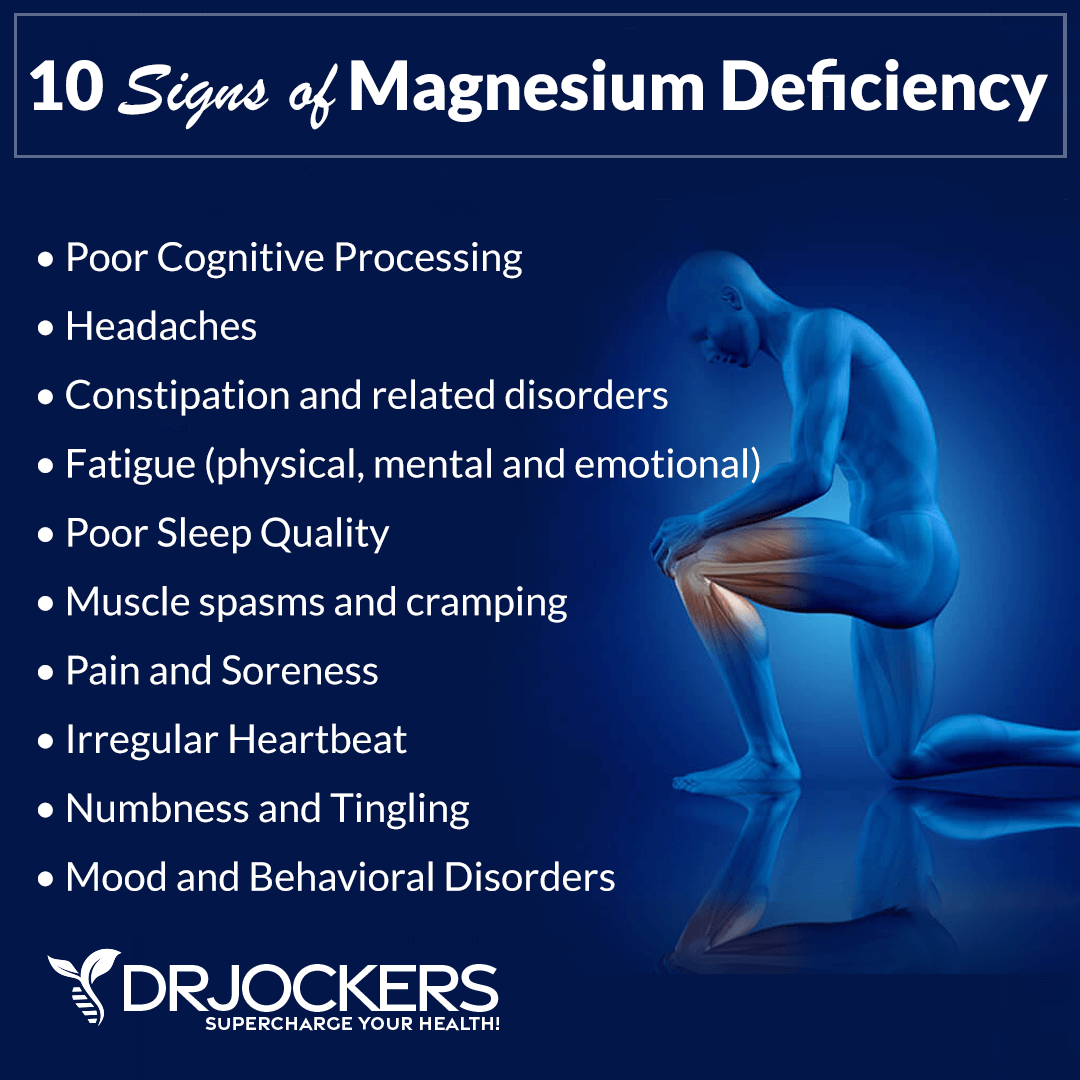
Optimize DNA Repair Enzymes:
In addition to having a strong defense against oxidative stress, it is important to optimize the body’s ability to heal damaged DNA. This role is fulfilled by a set of repair enzymes that can vary in number depending on genetic inheritance. Although genetic inheritance cannot be changed, there are strategies to optimize DNA repair enzymes.
A high intake of antioxidants has been shown to protect the integrity of DNA repair enzymes while consumption of L-carnitine, zinc, and the b-vitamins 6, 12, folate, and niacinamide has shown to increase the number of repair enzymes in some cases (7, 8).
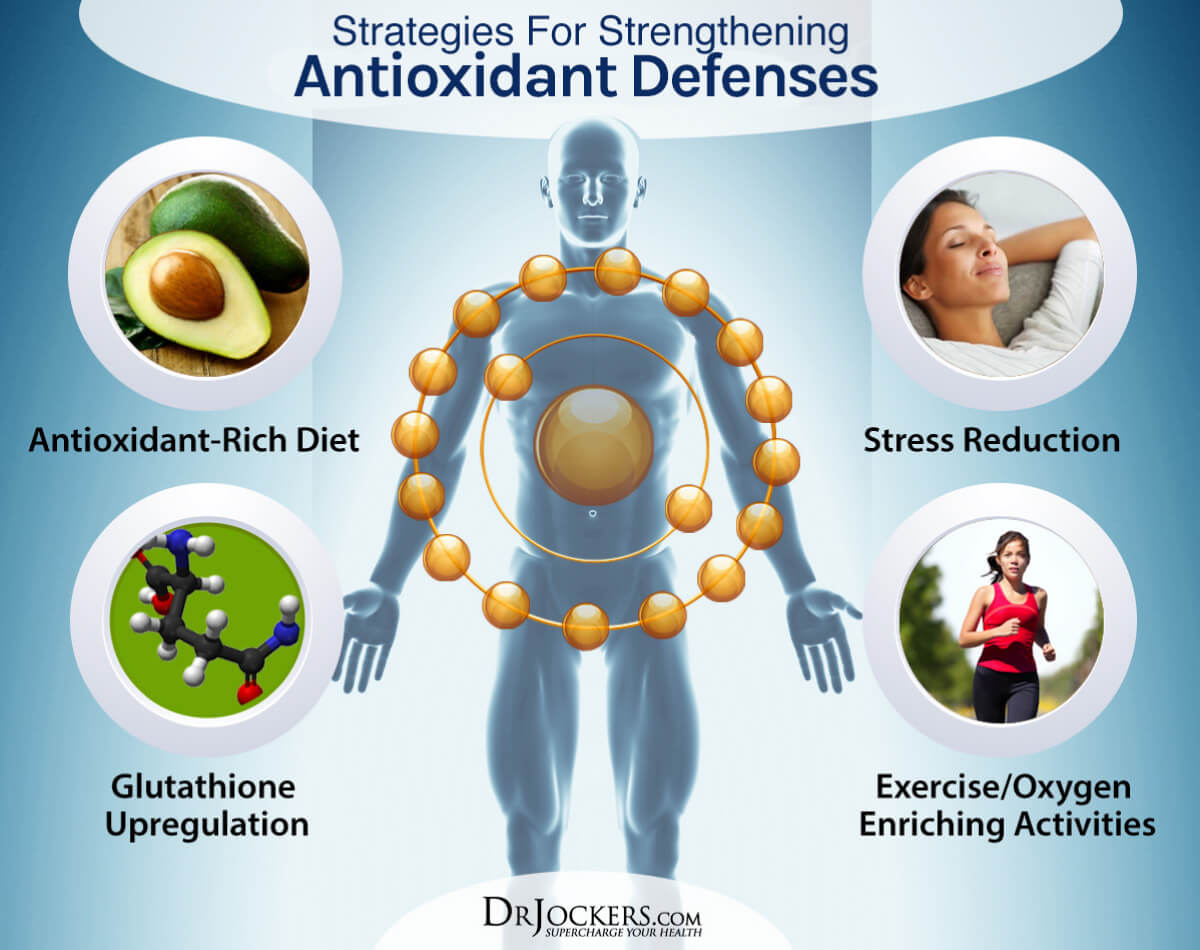
Other Cancer Prevention Strategies
There is a strong correlation between chronic inflammation and cancer risk. Because chronic inflammation is a substantial source of free radical generation, limiting inflammation in the body may serve as a vital strategy for mitigating cancer risk through the protection if DNA integrity. In addition to an antioxidant-rich diet, Inflammation can be controlled effectively by: optimizing vitamin D levels, consumption of omega-3 fatty acids, and dietary inclusion of turmeric or curcumin (9, 10, 11).
Another risk factor for the development of cancer is chronically high iron levels. High iron levels have been associated with increased inflammation and increased production of oxidants (12). It is also well known that rapidly dividing cells require high levels of iron in order to replicate DNA.
Monitoring iron levels and incorporating an iron chelation therapy has proven successful in the control of certain cancers. Iron chelation should be performed by a qualified health professional as such protocols can cause health problems if performed incorrectly. Turmeric, resveratrol and green tea extract are great natural iron chelators that can be used daily (13).
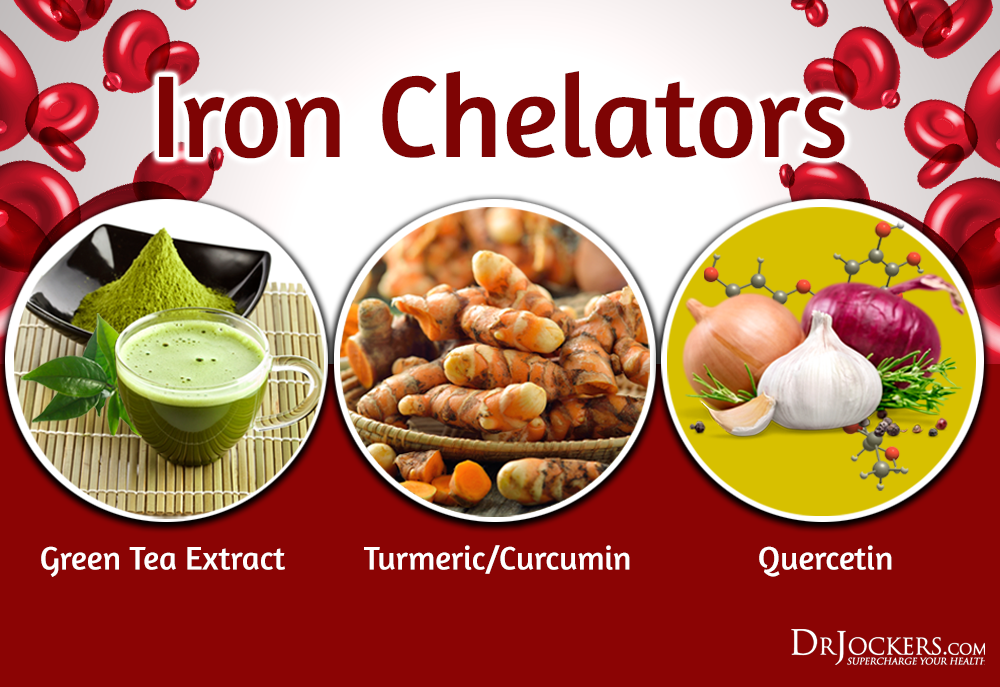
Final Thoughts
In our society it is often taught that cancer is a chance genetic mutation that simply occurs in some people but not in others. As expressed in this article however, a lot is understood about the mechanisms behind cancer formation.
By understanding these mechanisms and using scientifically validated natural methods, we are able to drastically lower our chances of acquiring cancer. Consuming an antioxidant-rich diet, controlling our systemic inflammation, and supplementing with therapeutic compounds such as omega-3, vitamin D, resveratrol, magnesium and curcumin are just a few of these methods that can make a difference.
If you want to work with a functional health coach, I recommend this article with tips on how to find a great coach. Our website offers long-distance functional health coaching programs with our world-class team of health coaches. For further support with your health and other goals, just reach out—our fantastic coaches are here to support your journey.
Inflammation Crushing Ebundle
The Inflammation Crushing Ebundle is designed to help you improve your brain, liver, immune system and discover the healing strategies, foods and recipes to burn fat, reduce inflammation and Thrive in Life!
As a doctor of natural medicine, I have spent the past 20 years studying the best healing strategies and worked with hundreds of coaching clients, helping them overcome chronic health conditions and optimize their overall health.
In our Inflammation Crushing Ebundle, I have put together my very best strategies to reduce inflammation and optimize your healing potential. Take a look at what you will get inside these valuable guides below!
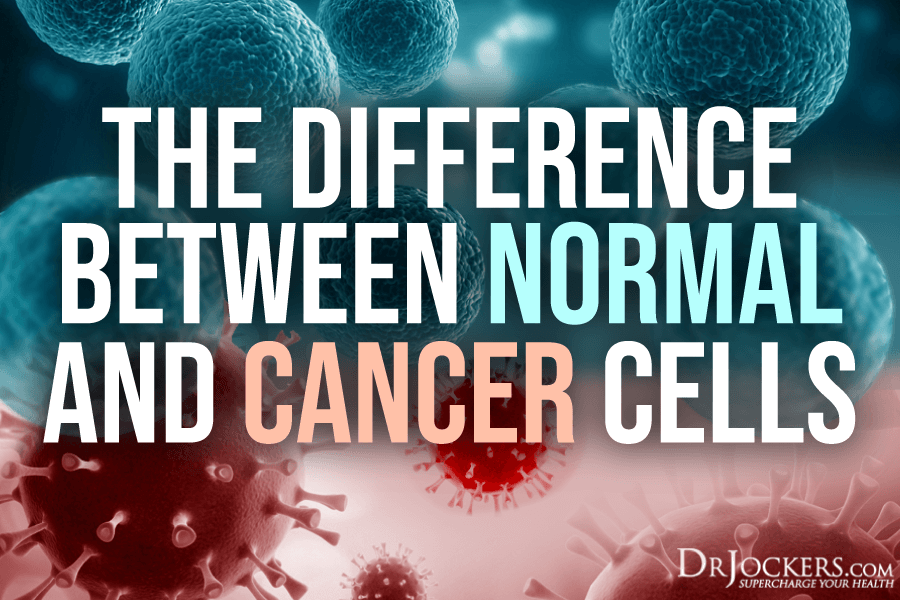

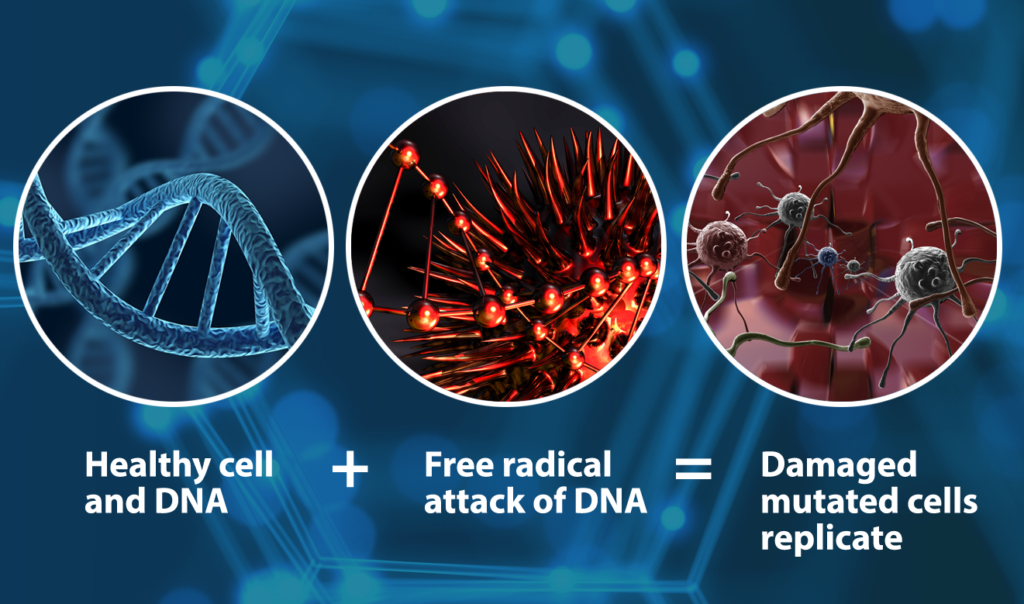
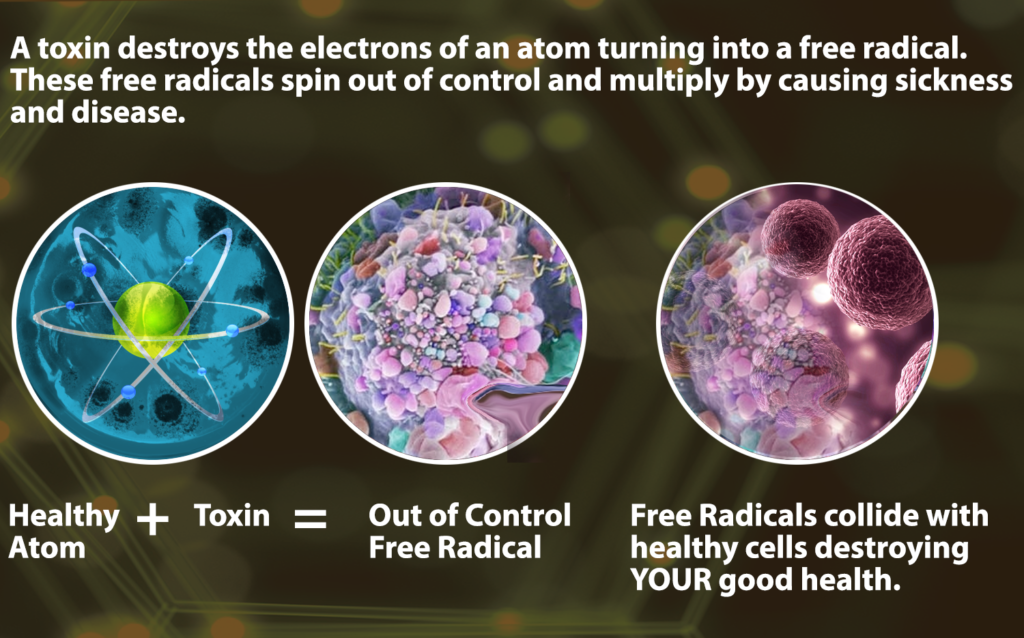


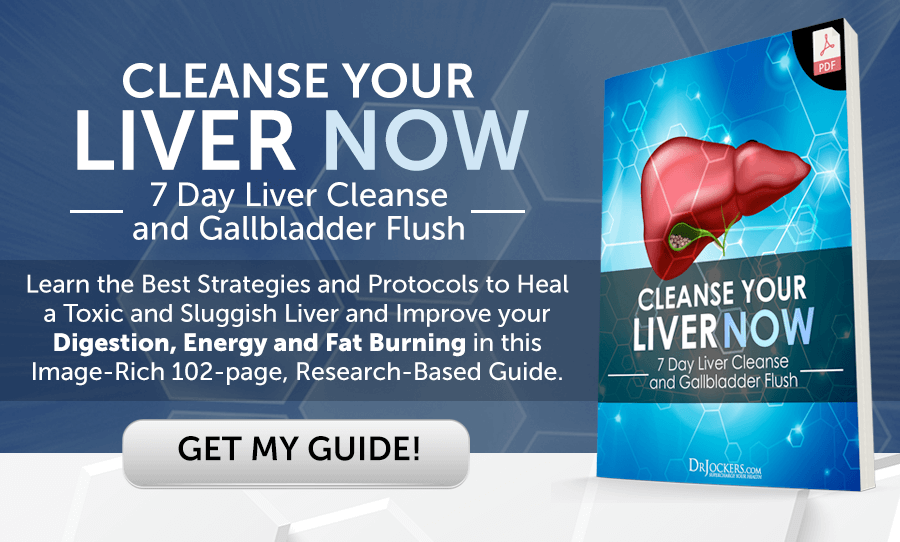


And cancer cell inside is even more alk`aline than healthy one?
No a cancer cell would be very acidic due to the over reliance on glycolysis and production of lactic acid as a byproduct.
I read something different. A huge misconception exists. Though I suppose that at the beginning tumor is slightly more alkaline than surrounding tissue, then it grows and develops acidic shell with “proton pump” mechanism, keeping its core even more “live” (alkaline). I read a part of a huge forum thread somewhere about it, but do not remember where. Though it does not really matter in practice – we still need to “rock” our balance, taking into account the patient’s state during the day. But maybe you are right.
That is interesting, I haven’t found that in my research.
1. You in “The Truth About Cancer- A Global Quest – Episode 7” at 00:26:05 said that “The core of the cancer is highly hypoxic”.
2. Your fellow doctor at the last TTAC conference Paul Barattiero explained alkaline water with H2 (how do you feel about it, by the way?) being present near the negative electrode, and acidic one with O2 – near the positive electrode.
3. Less oxygen – more alkaline. Right?
https://tinypic.com/r/mmbigw/9
He mistakenly called the negative electrode “cathode” at the picture. But it is OK.
I have been studying nutrition anatomy physiology for months now on Google scholar on YouTube Dr Edgar it to be cancer journals national and I have not gotten as much understanding as I did with your one article thank you very much
Great to hear this Barbarita! Thank you for your support! Blessings to you!